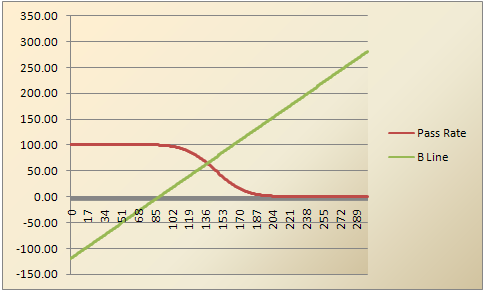
What is the Beuk Compromise?
The Beuk Compromise or Beuk Adjustment is a method for a “reality check” on the results of a modified-Angoff standard setting study. It is well-known that experts will often overestimate examinee capabilities and choose a cutscore that is too high – in some cases, so high that even the experts themselves would fail the exam! The Beuk Compromise was designed to balance this with the reality of actual examinee performance. There are similar methods as well, such as the Hofstee Method.
What is a modified-Angoff study?
The Angoff approach is one of the most common ways of setting a defensible cutscore on an exam, especially in the world of professional credentialing (certification and licensure testing). A panel of subject matter experts (SMEs) is convened to discuss the concept of a minimally competent candidate (MCC) and then review each item on the exam to estimate the percentage of minimally competent candidates that would get each item correct. If experts disagree, you will need to evaluate inter-rater reliability and agreement, and after that have the experts discuss and re-rate the items to gain better consensus. The average of these ratings is then the average score that the panel expects an MCC to achieve – a very compelling argument for what should be the passing score!
OK, then what is the issue?
But in practice, the experts are often in rarified air and forgot what it was like to be 22 years old and entering the profession wide-eyed, so they often overestimate both the description of the MCC and the difficulty ratings themselves. You might find a situation where they set the cutscore at 82, but the average score on the exam is 63. You might go further and ask the experts to take the exam themselves and find their average is only 75!
So, psychometricians have developed add-on procedures to address this issue. Each SME can also be asked to provide information for an adjustment or compromise method. A compromise method assumes that we should not rely on modified-Angoff ratings alone; the results of another method should be considered in conjunction.
The most common adjustment method is the Beuk adjustment or Beuk compromise, which recognizes that a pure Angoff study makes no use of actual data on the test, and instead attempts to reconcile the Angoff approach with an estimate of the score distribution on the test. Of course, this approach can then be only used if data exists; if there is no data available with which to estimate the score distribution, the Beuk adjustment is not possible.
What is the Beuk Compromise?
To find the Beuk compromise, two pieces of information are needed from each SME: an estimated pass rate and an estimated cutscore. The estimated cutscore is obtained by calculating the average Angoff rating for each SME; you need to ask them for what they think the MCC pass rate should be. What you will often find is that they say the pass rate should be, say, 75%, but when you continue the example before (average score of 63), the pass rate with their recommended cutscore turns out to be 10%!
How do I implement the Beuk Compromise?
Use the Angoff Analysis Tool.
SMEs are then simply asked in the meeting to estimate the pass rate of examinees who take the test, after having reviewed all the items. Enter those values into the AAT in the assigned cells. If the SMEs consider the test difficult with regards to the cutscore that should be applied and the types of examinees, a low pass rate will be estimated. These ratings are recorded on the “Adjustments” tab of the AAT.
The Beuk adjustment is best depicted graphically, and this figure is presented on the last tab of the AAT workbook. It involves two functions:
- A curve that presents the pass rate as a function a function of all possible cutscores – this is calculated using the estimates of the score distribution.
- A straight line that is a function of the estimated pass rates. The line must pass through the point on the plane where the expected pass rate and panel-recommended cutscore intersect, and has a slope equal to the ratio of the standard deviations of the rater’s cutscore and pass rate estimates.
The x-coordinate of the intersection of these two functions is the Beuk adjustment. An example of this graph is presented below. Here, we have a 200-point exam. A cutscore of 170 would produce a pass rate of about 20%. A cutscore of 120 would produce a pass rate of about 90%. The Beuk comes out to be about 145.

Nathan Thompson, PhD
Latest posts by Nathan Thompson, PhD (see all)
- What is an Assessment-Based Certificate? - October 12, 2024
- What is Psychometrics? How does it improve assessment? - October 12, 2024
- What is RIASEC Assessment? - September 29, 2024

